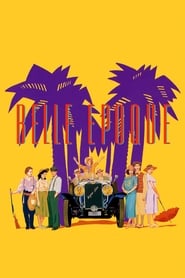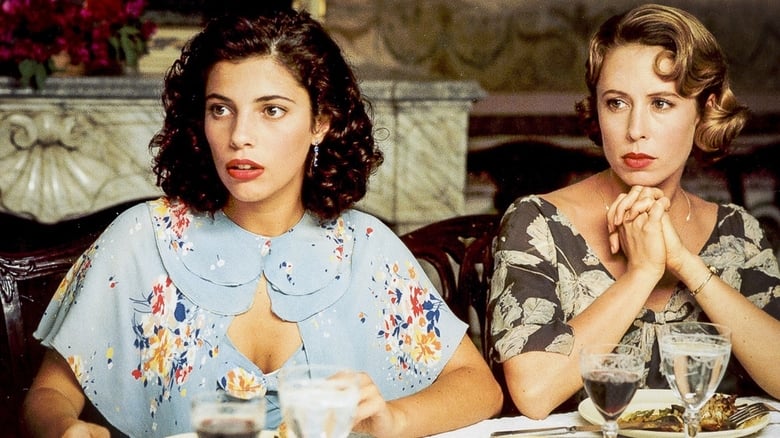“Belle Époque 1992” is a Spanish film set during the early 20th century. The movie follows a young soldier, Fernando, who falls in love with four different women over the course of one summer. The film is a beautiful portrait of love and lust, set against the backdrop of idyllic Spanish countryside. With its stunning cinematography and charming performances, “Belle Époque 1992” is a romantic masterpiece that will leave you feeling enchanted and enamored.

⇣⇣⇣
Review
The year is 1931, Spain is going through a great societal change, and the new era is being shaped by the events of the past. In 1992, director Fernando Trueba’s movie Belle Époque was released to the audience. It tells a story of a young soldier named Fernando who has just deserted from the army and ends up in an idyllic village. There he meets four beautiful sisters and falls in love with all of them. The movie is full of comedy, drama, romance, and Spanish flavor. It’s an ode to beauty, passion, love, and life.
The film opens with Fernando traveling on a motorbike under clear blue skies with Spanish guitar music in the background. He stops at a village where he meets Manolo (Fernando Fernán Gómez), an eccentric artist who invites him to stay with him for dinner. While there he meets Manolo’s four daughters Clara (Miriam Díaz-Aroca), Violeta (Ariadna Gil), Rocío (Maribel Verdú) and Luz (Penélope Cruz). One by one they fall in love with him.
This simple plot sets off following some challenging questions – can one man love four women at once? What makes a woman fall in love? And how do different types of people cope during times of societal changes? These inquiries are explored throughout the movie as characters try to figure out their own identity during these changing times.
Trueba expertly unravels each character’s complexities; their desires, fears, hopes are shown flawlessly on screen making it impossible not to root for them throughout the romantic entanglements that take place.
The movie is not only about love but also politics; it portrays Spain as it was before it became a democratic nation. Belle Époque captures what could have been lost forever had history not been preserved through cinematic storytelling.
Belle Époque is about the human condition, it’s about love, and it’s about the transformational power of art. Each character is richly developed and given their moment to shine. Even minor characters like Paquito, played by Jorge Sanz, are memorable as he plays a critical role in Fernando’s interactions with the sisters.
The chemistry between the characters enhances the film further, particularly between Fernando and each of the sisters. The dialogue is witty and provocative allowing for some humorous moments.
True to Gabriel Garcia Marquez style of magical realism, Trueba infuses magical elements throughout the movie to create an enchanting experience for viewers. One such example is when a character turns into a cow after consuming too much wine during a party scene: unexpected and amusing.
Throughout Belle Époque, Trueba weaves in different themes that come together seamlessly. We see how beauty can be transformative both within ourselves and our relationships with others; how art can help us navigate through challenging times in our lives and bring joy even during dark times.
The film has received widespread critical acclaim both domestically and internationally winning numerous prestigious awards such as Best Foreign Language Film at the Oscars in 1994. It remains on people’s favorite list of all time classics being widely viewed over 25 years since its release.
The visual presentation of Belle Époque also adds to its appeal; the cinematography captures Spain’s stunning landscapes beautifully showcasing Spain at its height of beauty while reflecting on its troubled past.
The music score complements this visual spectacle providing emotional depth reminding us that life is not just about what we see, but what we feel too. The music gives a sense of history that surrounds each scene while remaining modern enough never to distract from what’s taking place on screen – a reminder of how music can transcend time itself.
It’s hard to imagine anyone not being swept away by Belle Epoque’s charm. It captures everything that makes life worth living; love, beauty, art, and compassion. It’s a timeless movie that will stand the test of time and continue to be watched for generations to come.
In conclusion, Belle Époque is not just a romantic comedy; it’s a film that speaks to what makes us human. It’s about finding love in all its forms; it’s about art and how it can help us cope with turbulent times in our lives. Most importantly, Belle Époque reminds us what true beauty looks like both outwardly and inwardly, making it one of the most enchanting films ever made.
Technical Data

- Runtime : 109
- Release : 1992-12-04
- Genre : Comedy, Drama, Romance
- Cast : Penélope Cruz as Luz, Jorge Sanz as Fernando, Ariadna Gil as Violeta, Fernando Fernán Gómez as Manolo, Maribel Verdú as Rocío
- Crew : José Luis Alcaine as Director of Photography, Antoine Duhamel as Original Music Composer, Lala Huete as Costume Design, Andrés Vicente Gómez as Executive Producer, António da Cunha Telles as Co-Producer
- Popularity 10.129
- Budget : 0
- Revenue : 0
- Company : Animatógrafo, Sogepaq, Eurimages
- Summary : In 1931, a young soldier deserts from the army and falls into a country farm, where he is welcomed by the owner due to his political ideas. Manolo has four daughters, Fernando likes all of them and they like him, so he has to decide which one to love.
- Tagline : A sexy, lusty uninhibited comedy.
